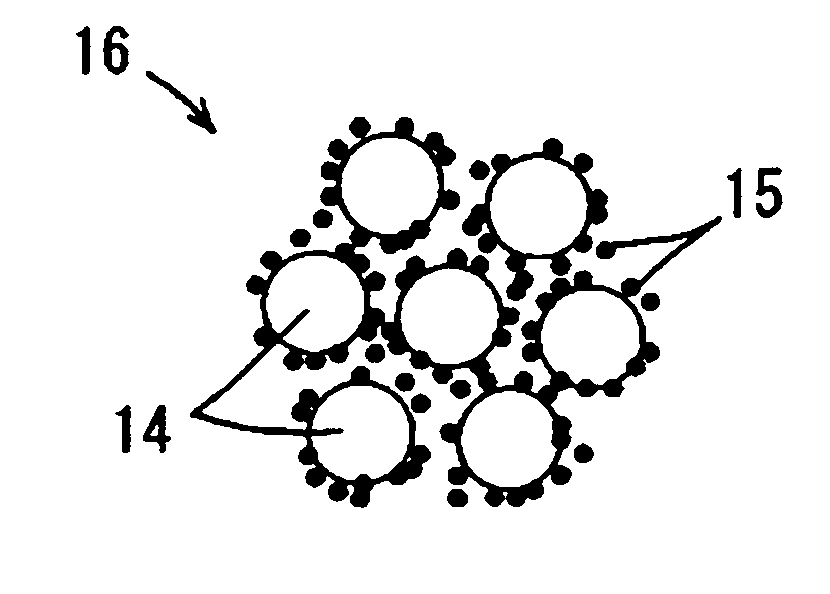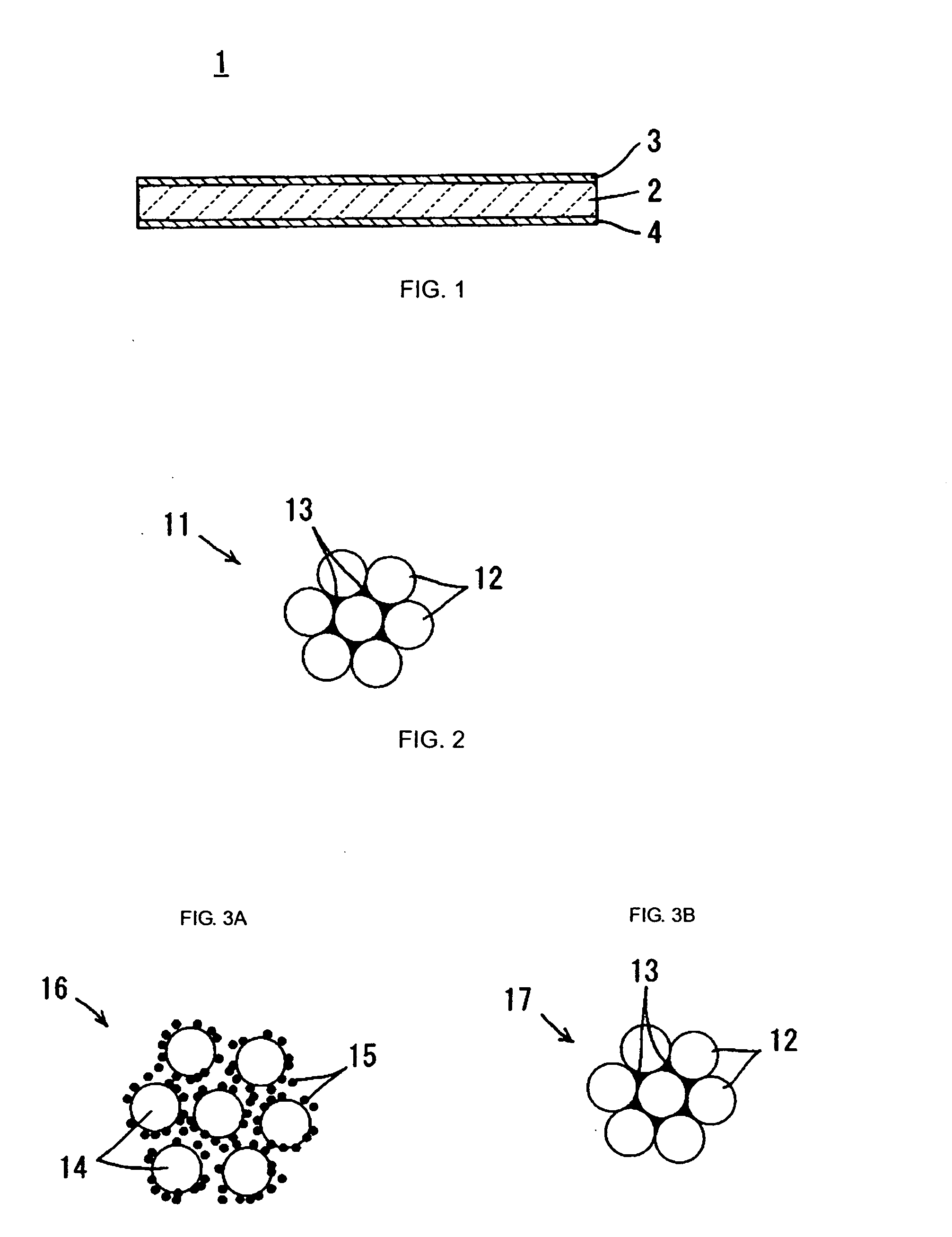Piezoelectric ceramic, method of producing the same, and piezoelectric part
- Summary
- Abstract
- Description
- Claims
- Application Information
AI Technical Summary
Benefits of technology
Problems solved by technology
Method used
Image
Examples
example 1
[0039] As powdery compound raw materials for a piezoelectric material, powders of lead oxide, zirconium oxide, titanium oxide, strontium carbonate, magnesium hydroxide and chromium oxide were prepared. These powders were compounded in such amounts that lead titanate zirconate having a composition represented by the following formula: Pb0.93Mg0.02Sr0.05(Zr0.54Ti0.46)O3+0.5 weight % Cr2O3 could be obtained. The compounded powdery compound raw materials were wet-mixed by means of a ball mill. Then, water was removed, and the powdery compound raw materials were dried and calcined at a temperature of 850 to 950° C. for 2 hours. The calcined powder was wet-crushed by means of a ball mill. Thus, a calcined powder for use as the piezoelectric material having an average particle size of 1.6 μm was formed.
[0040] As powdery compound raw materials for a dielectric material, powders of lead oxide, magnesium hydroxide and niobium oxide were prepared. The powders were compounded in such amounts t...
example 2
[0049] In Example 2, effects of the ratio of the particle sizes of the calcined powder for use as the piezoelectric material to those of the calcined powder for use as the dielectric material were investigated.
[0050] In particular, a calcined powder for use as a piezoelectric material having the same composition and average particle size, i.e., 1.6 μm of the calcined powder for use as the piezoelectric material in Example 1 was prepared. Moreover, calcined powders for use as a dielectric material having the same compositions as the calcined powder for use as the dielectric material and the average particle sizes of 0.1 μm, 0.2 μm, 0.4 μm, 0.5 μm, and 0.8 μm were prepared. Each calcined powder for use as the dielectric material was mixed with the calcined powder for use as the piezoelectric material in an amount of 1 part by weight based on 100 parts by weight of the calcined powder for use as the piezoelectric material. Thus, mixed powders were produced.
[0051] In other respects, p...
example 3
[0055] In Example 3, powders of lead oxide, zirconium oxide, titanium oxide, strontium carbonate, magnesium hydroxide, niobium oxide, and chromium oxide were prepared as powdery compound raw materials for a piezoelectric material. Piezoelectric parts were prepared in the same manner as that in Example 1 except that these powders were compounded in such amounts that lead titanate zirconate having a composition represented by the following formula: Pb0.93Mg0.03Sr0.05{(Mg1 / 3Nb2 / 3)0.05Zr0.49Ti0.46}O3+0.5 weight % Cr2O3 could be produced, and were taken as samples. The measurement was carried out as in Example 1. Table 3 shows the results.
TABLE 3CALCINED POWDER FORUSE AS DIELECTRICSAMPLEMATERIALCV-frCV-faNO.(PARTS BY WEIGHT)Kp (%)(ppm)(ppm)21050.96501350220.0550.9420850230.251.231050024151.820032025350.924039026548.4460770275.546.3530920
[0056] As seen in Table 3, the same tendency as that shown in Table 1 of Example 1 is exhibited in this Example 3.
[0057] In particular, the dispersion...
PUM
| Property | Measurement | Unit |
|---|---|---|
| Percent by mass | aaaaa | aaaaa |
| Percent by mass | aaaaa | aaaaa |
| Fraction | aaaaa | aaaaa |
Abstract
Description
Claims
Application Information
 Login to View More
Login to View More - R&D
- Intellectual Property
- Life Sciences
- Materials
- Tech Scout
- Unparalleled Data Quality
- Higher Quality Content
- 60% Fewer Hallucinations
Browse by: Latest US Patents, China's latest patents, Technical Efficacy Thesaurus, Application Domain, Technology Topic, Popular Technical Reports.
© 2025 PatSnap. All rights reserved.Legal|Privacy policy|Modern Slavery Act Transparency Statement|Sitemap|About US| Contact US: help@patsnap.com


